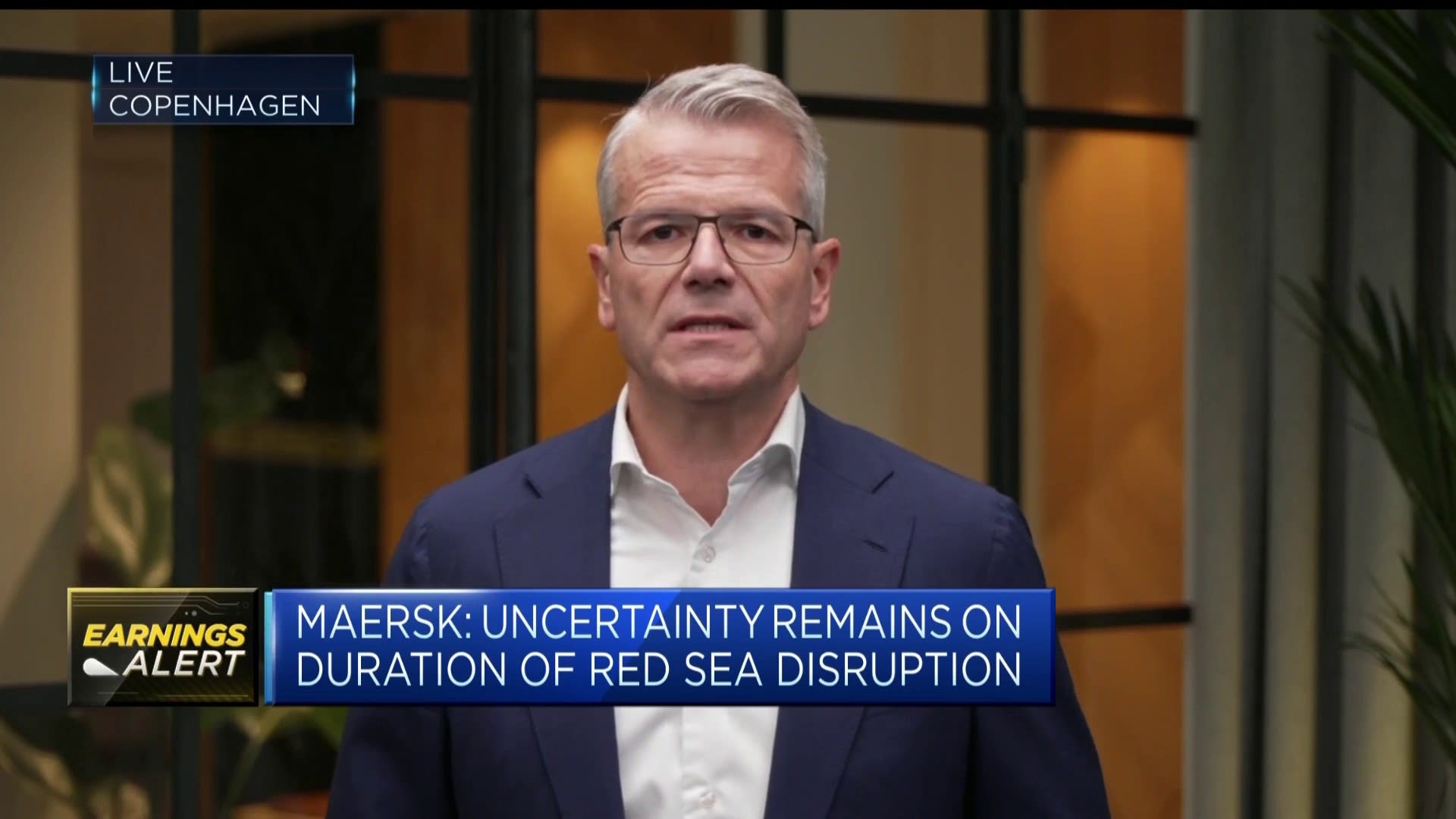An aerial view of a container ship leaving the dockyard in Qingdao in east China’s Shandong province.
Future Publishing | Future Publishing | Getty Images
The Red Sea crisis has fueled a sharp spike in ocean freight inflation over the past two months, but there are signs that upward pressure on shipping rates on key trade routes may have peaked. Shipping rates on ocean routes from Asia to the U.S. are beginning to decline, based on analysis of the latest cargo data from Xeneta, a leading ocean and air freight benchmarking platform. Europe and the Mediterranean rates had already started to decline at the end of January.
If the latest decrease in rates holds, it would provide some relief for U.S. shippers who have seen ocean freight rates from the Far East to U.S. increase in a general range of 146% (East Coast) to 186% (West Coast) as a result of the Red Sea attacks.
The reversal in ocean freight pricing comes despite a maritime threat to global commercial shipping companies that shows no signs of waning. Most recently, the United Kingdom Maritime Trade Operation said a bulk carrier was attacked by rocket fire off the coast of Aden, Yemen, with the ship suffering minor damage, though no crew injuries were reported. It marked the forty-eighth attack on commercial shipping since November 19.
According to the new data provided to CNBC by Xeneta container rates have fell slightly from $6,260 per FEU (40-foot container) on February 1 to $6,100 on February 15. Rates from the Far East to the West Coast have declined from $4,730 per FEU to $4,680 in the same time period. The data indicates a peak in spot rates from the Far East into the U.S. may have been reached after spot rates since the last round of general rate increases (GRIs) were implemented at the start of February.
“Early indications suggest a further softening of the market in the next 10 days,” explained Emily Stausbøll, Xeneta market analyst.
Xeneta’s data is aggregated from more than 400 million crowdsourced data points.
While this is a welcome development for U.S. importers, U.S. East Coast spot rates are still up 146% compared to December 14, and 186% into the U.S. West Coast.
“Unlike during Covid-19 when disruption continued to wreak havoc, shippers and carriers now know what they are dealing with in terms of ships being diverted around Africa to avoid the Suez Canal,” said Stausbøll. “Rates are still elevated so the impact of this crisis is far from over, and the situation can still change at any moment, but perhaps some semblance of order has been restored.”
The timing of the rate decreases could influence new contracts in negotiations between ocean freight carriers and shippers at the beginning of March.
“Carriers will be doing everything within their power to keep rates elevated for when they enter negotiations with U.S. shippers for new contracts,” Stausbøll said. “However, Xeneta data suggests this will prove difficult and it is likely rates will decrease further in the next 10 days, as we have already seen happen on trades from the Far East into Europe.”
The decline in shipping rates comes amid a recent decrease in demand for Asian manufacturing, and during the Lunar New Year period which is a time of lower freight volumes as Chinese manufacturing slows down in observance of the holiday. Volumes are expected to move higher once manufacturing factories are back up and running, and that could influence pricing over the rest of the year.
“When they can see an increase in volumes out of the Far East post-Lunar New Year, it could provide potential upward pressure on rates,” Stausbøll said. “Either way, the next few weeks is crunch time for both ocean freight carriers and shippers and could define their fortunes for the rest of 2024.”


